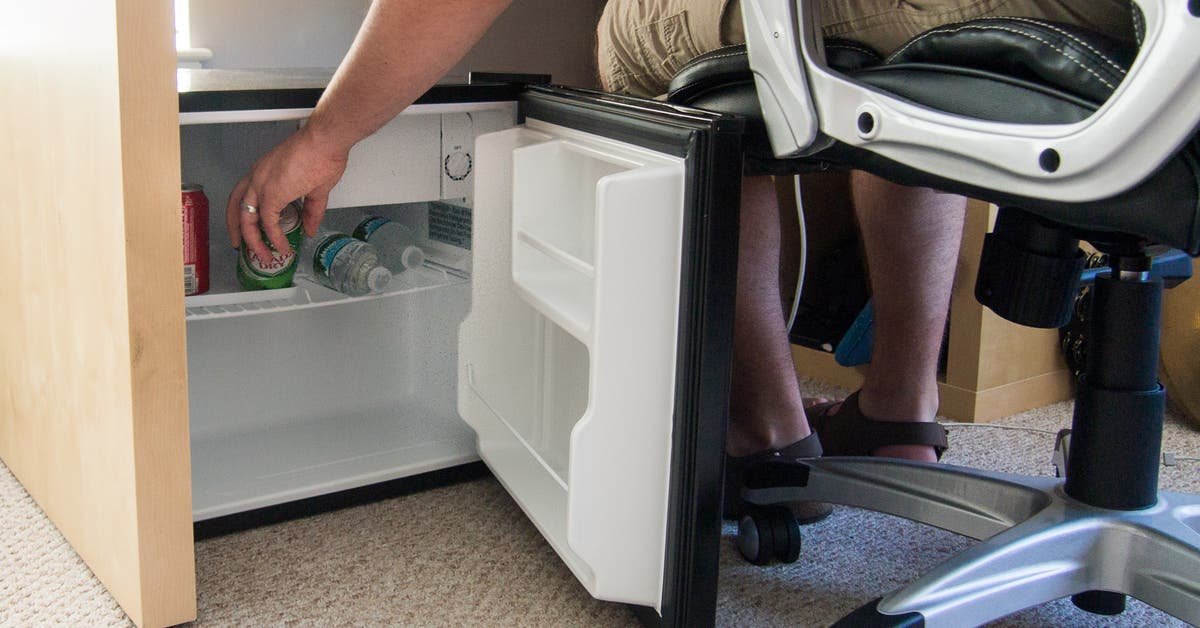
We put in roughly 25 hours of research and hands-on testing to make this guide’s recommendations. After setting up the picks and gathering initial impressions, we left a couple of our favorite models running, each with a head of lettuce and a frozen meal inside, for a week. And after that test wrapped up, we kept using them to store drinks and snacks, gathering in total a couple of weeks’ worth of performance data.
But that isn’t the only experience we’ve had testing mini fridges. Both the editor and writer of this guide covered appliances for Reviewed.com, and we did a couple of mini fridge roundups. For our most recent update, we conducted additional research online.
The methodology has been a bit different each time we’ve done a roundup, but we keep coming away with the same conclusion: All mini fridges work fine. They’re all built around similar parts, just in different capacities with different shelves. Any of them will get cold enough to store food for a few days. So go ahead and buy whatever is cheap and available, even if that means buying a used one.
That said, we set out to find the standout models, the ones with the best shelves and the best prices, for anyone who wants a slightly better experience with their mini fridge.
We started by making a spreadsheet of the best-selling mini fridges at major retailers such as Amazon, Best Buy, and Home Depot. We compared capacity, size, price, and other specs, and we tracked user ratings. We also made sure to consider only fridges that use compressors for cooling, as opposed to thermoelectric elements, which don’t get cold enough to keep food safe.
People need to fit small fridges in all kinds of spaces, so we broke the category down into two divisions based on size: cube mini fridges and tall mini fridges.
Cube mini fridges are short enough to fit under a desk or even into a shelving unit, but they’re also great for dorm rooms, tiny apartments, game rooms, office lunch areas, or anywhere else you want a compact fridge. They’re handy for keeping a stash of drinks or snacks, and maybe a day’s lunch for two people. Most cube fridges have a similar capacity and shelving layout.
Tall mini fridges are available with a wider variety of capacities and shelving options. They’re too tall to fit under a typical 30-inch desk, but if you need to store a couple of cases of canned drinks or a few days’ worth of food, one of these should do the trick. (We also plan to test two-door mini fridges with separate refrigerator and freezer compartments.)
For our initial round of testing in 2016, we settled on five finalists—two cube models and three tall models.
Any fridge needs to keep food safe to eat, mini fridges being no exception. All of our previous experience with these appliances told us that they’re up to that task. But just to be sure, we ran some tests to confirm that each fridge could keep food safe and appetizing.

We used a low-temperature digital thermometer to take readings in each appliance. For the fridge compartment, we recorded the maximum and minimum temperatures it reached over a period of half an hour. Then we did the same for the freezer compartment. After narrowing down the group to our top two picks, we recorded overnight temperature readings to be sure that they worked well.
Alongside that test, we stashed a frozen, microwavable meal into each model’s freezer compartment and checked it periodically over several days to confirm that it stayed frozen, and that the appliance kept freezer burn to a minimum. We also put half a head of iceberg lettuce on the top shelf of the fridge to see how well the fridge could preserve perishable produce, as well as to see if it accidentally froze items sitting near the freezer.
In another test we gauged how much stuff we could fit in, which has as much to do with the shelving layout as with the manufacturer’s claimed capacity. We used standard 12-ounce soda cans as our main unit of measurement, though we also took notes on whether the fridges could store some commonly used, awkwardly shaped items like gallon jugs, snacks, and takeout boxes.
We also considered factors such as compressor noise (they were all fine) and whether cans came flying out of the in-door shelves when we opened the door too fast (they always did).





